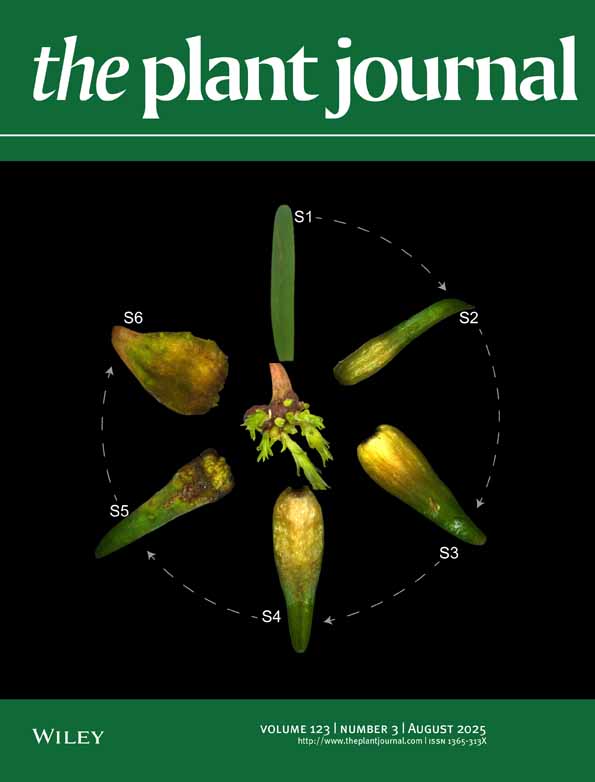Transcriptional activation of a maize α-tubulin gene in mycorrhizal maize and transgenic tobacco plants
Summary
Mycorrhizae are symbioses between soil fungi and roots, with substantial modifications of the cells of both partners. Thus, host cells colonized by mycorrhizal fungi may express otherwise inactive genes. Here it is demonstrated that two arbuscular mycorrhizal (AM) fungi, Glomus versiforme and Gigaspora margarita, cause the transcriptional activation of a gene coding for α-tubulin in the colonized cells of maize and transgenic tobacco roots. Tobacco plants transformed with a construct containing the maize Tubα3 gene promoter fused upstream from the bacterial GUS gene showed an intense GUS activity only in meristematic regions. When colonized by G. margarita, GUS activity was detected in the cortical root cells containing fungal arbuscules. No GUS activity was found in root cells when transformants carrying Tubα1 promoter were used, nor when Tubα3 transformants were colonized by ericoid mycorrhizal fungi, leading to a non-specific interaction. Activation of the Tubα3 appears to be specific to the gene and to the appropriate interaction. Further evidence that fully differentiated host tissues re-activate the Tubα3 gene following colonization by AM fungi also comes from accumulation of the corresponding transcripts in maize root cells containing arbuscules.




